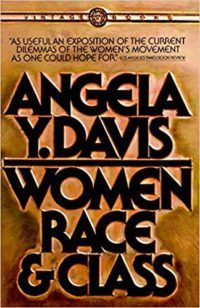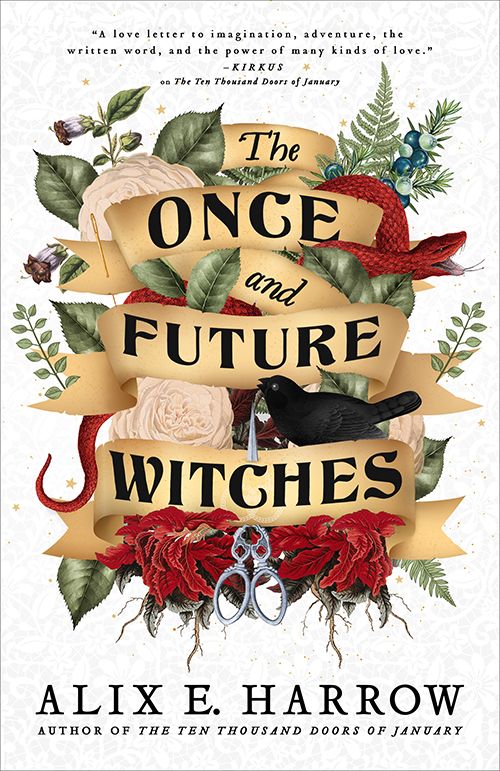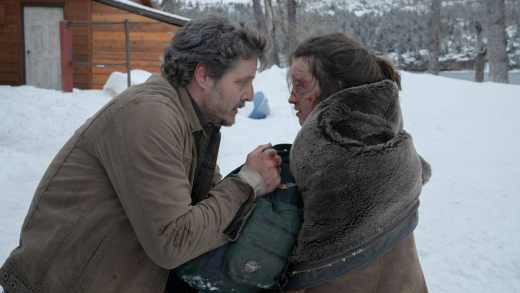The Women’s Suffrage Movement is a fascinating yet under-taught period in United States history. August 18th marks the 100th anniversary of the ratification of the 19th amendment, which states that “The right of citizens of the United States to vote shall not be denied or abridged by the United States or by any State on account of sex.” Many place the start date of the Women’s Suffrage Movement at the Seneca Falls Convention on July 19–20, 1848, which means it took 72 years for women to win the vote. Only one woman who attended the convention was still alive to vote when the 19th amendment passed: Charlotte Woodward Pierce, who was a teenager when she attended the Seneca Falls Convention and 91 years old when she voted for the first time. While the Seneca Falls Convention is commonly thought of as the movement’s launch, women had been meeting to discuss voting and women’s rights and advocating politicians and the law far before then so, if anything, it took far longer than 72 years.
The passing of the 19th amendment occurred in my home city of Nashville, Tennessee, yet even though I went to college in Tennessee and minored in history as an undergrad, I didn’t learn about Tennessee’s contribution until after I’d graduated. I remedied this lack of knowledge by reading, and it’s now one of my favorite periods of history to study. The movement encompasses many of the main social and political events of the 19th and 20th centuries, from abolition to WWI to the treatment of Native Americans and the advent of industrialism and worker’s rights. In many respects, the movement was built on the backs of people of color, yet these women were often excluded from the process when their support was deemed too costly. White women used the efforts and labor of abolitionists and Native American women to determine the most effective ways to protest, but almost all of the major white women in the movement, including Susan B. Anthony and Elizabeth Cady Stanton, placed white women’s suffrage above that of women of color—particularly African American women—and were willing to use racist tactics to ensure white women won the right to vote.
I’ve endeavored to make the 20 books on this list inclusive, diverse, and representative, but while I found many books about African American women’s roles in the Women’s Suffrage Movement, I only know of one book that addresses Native American women’s roles, and none that focus specifically on how lesbian women influenced the movement, though Dr. Sally Roesch Wagner does address that in her collection of primary sources The Women’s Suffrage Movement. Despite a plethora of books on the topic, still more is needed to get a full understanding of the Women’s Suffrage Movement.
20 Books About The Women’s Suffrage Movement
Adult Nonfiction
The Woman’s Hour by Elaine Weiss
The first half of The Woman’s Hour looks at the history of the Women’s Suffrage Movement leading up to August 18, 1920, and the ratification of the 19th amendment in Nashville. The second half reads like a political thriller, giving a play-by-play of the events of that day and the days before it. It shows how close the amendment came to failing, how bribery, alcohol, racism, in-fighting, and one mother’s guilt trip all came together to finally pass the amendment giving women the right to vote. Weiss manages to make an outcome that all readers know into a nail-biting drama. I listened to the audiobook and highly recommend it. If you want to feel the passion of that day in addition to getting a solid, general overview of the movement, then this is the book for you.
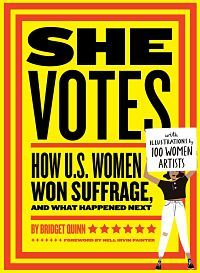
She Votes: How U.S. Women Won Suffrage, and What Happened Next by Bridget Quinn (August 11)
She Votes adds a visual component to the Women’s Suffrage Movement with gorgeous illustrations from more than 100 women artists. It’s an inclusive look at the movement, including portraits of Sojourner Truth, Sacajawea, and other women of color, and connects the origins of the movement to current feminism. The combination of vibrant illustrations and compelling text makes this the most accessible adult book on the list, and would make an excellent gift, for yourself or others!
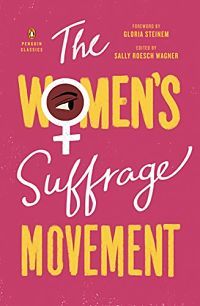
The Women’s Suffrage Movement edited by Sally Roesch Wagner
If you’re looking for a scholarly deep dive into women’s suffrage, this is the book you need. It’s a giant collection of primary documents about the Women’s Suffrage Movement, with excellent commentary from Dr. Sally Roesch Wagner, one of the leading historians of women’s history. Dr. Wagner places the beginnings of the movement with the Iroquois Nation and their struggle to maintain tribal women’s rights against the sexism and racism of a white, patriarchal U.S. culture. She then shows how much of the movement was influenced by the African American abolitionist movement. Throughout her commentary, Dr. Wagner points out the racist and sexist tactics used by almost every major white suffragist, including Susan B. Anthony. I found myself often cringing while I read the primary documents. In her conclusion, Wagner argues that it would’ve been better if women had won the vote later without resorting to racist tactics than winning it in the way that we did, by disenfranchising African American voters. This observation struck a chord with me.
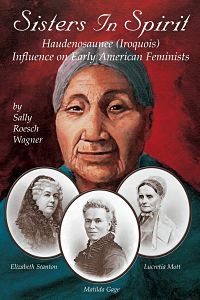
Sisters in Spirit: Haudenosaunee (Iroquois) Influence on Early American Feminists by Sally Roesch Wagner
While Dr. Wagner spends a chapter on how the Iroquois Nation influenced the movement in her collection of primary documents The Women’s Suffrage Movement, she goes into greater detail in Sisters in Spirit. Iroquois women of the Six Nations Confederacy exercised equal authority to Iroquois men, and their political power and freedoms inspired women’s suffrage activists like Elizabeth Cady Stanton, Lucretia Mott, and Matilda Joslyn Gage. Both academic and fascinating, Dr. Wagner provides much-needed insight into the early history of women’s suffrage and its tie to Iroquois equality and feminism.
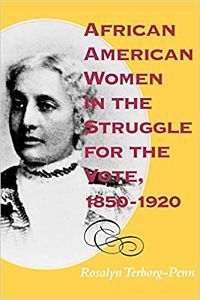
African American Women in the Struggle for the Vote, 1850-1920 by Rosalyn Terborg-Penn
Dr. Rosalyn Terborg-Penn takes a scholarly approach to examining African American women’s roles in the Women’s Suffrage Movement. She looks at the reasons African American women joined the movement and the ways they were ostracized by white women suffragists, yet created a thriving suffrage movement of their own. This is the most detailed and comprehensive book to read specifically about African American women in the suffrage movement.
Women, Race & Class by Angela Y. Davis
In Women, Race & Class, Davis examines the broad history of the woman’s movement and the racism that has plagued it from the abolition to the ’60s. It’s a revolutionary book of intersectional feminism, showing how middle class, white-dominated social movements fail to be inclusive of Black and lower-income folk. While broader in scope than the other books on this list, it’s essential to connect the effects of racism in the Women’s Suffrage Movement to later feminist movements. It’s a modern feminist classic that’s an excellent introduction to intersectional feminism.
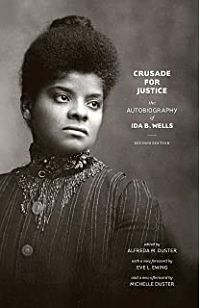
Crusade for Justice: The Autobiography of Ida B. Wells by Ida B. Wells
Ida B. Wells was a journalist, teacher, and activist who was an ardent support of African American women’s suffrage. She co-founded the NAACP and started the Alpha Suffrage Club in Chicago. This memoir describes her life as a mother, her activism against white violence and lynching, and her advocacy for African American women’s right to vote and participate in politics. It’s a classic that should be read just as often as the works of her contemporaries Frederick Douglas and W.E.B. Du Bois.
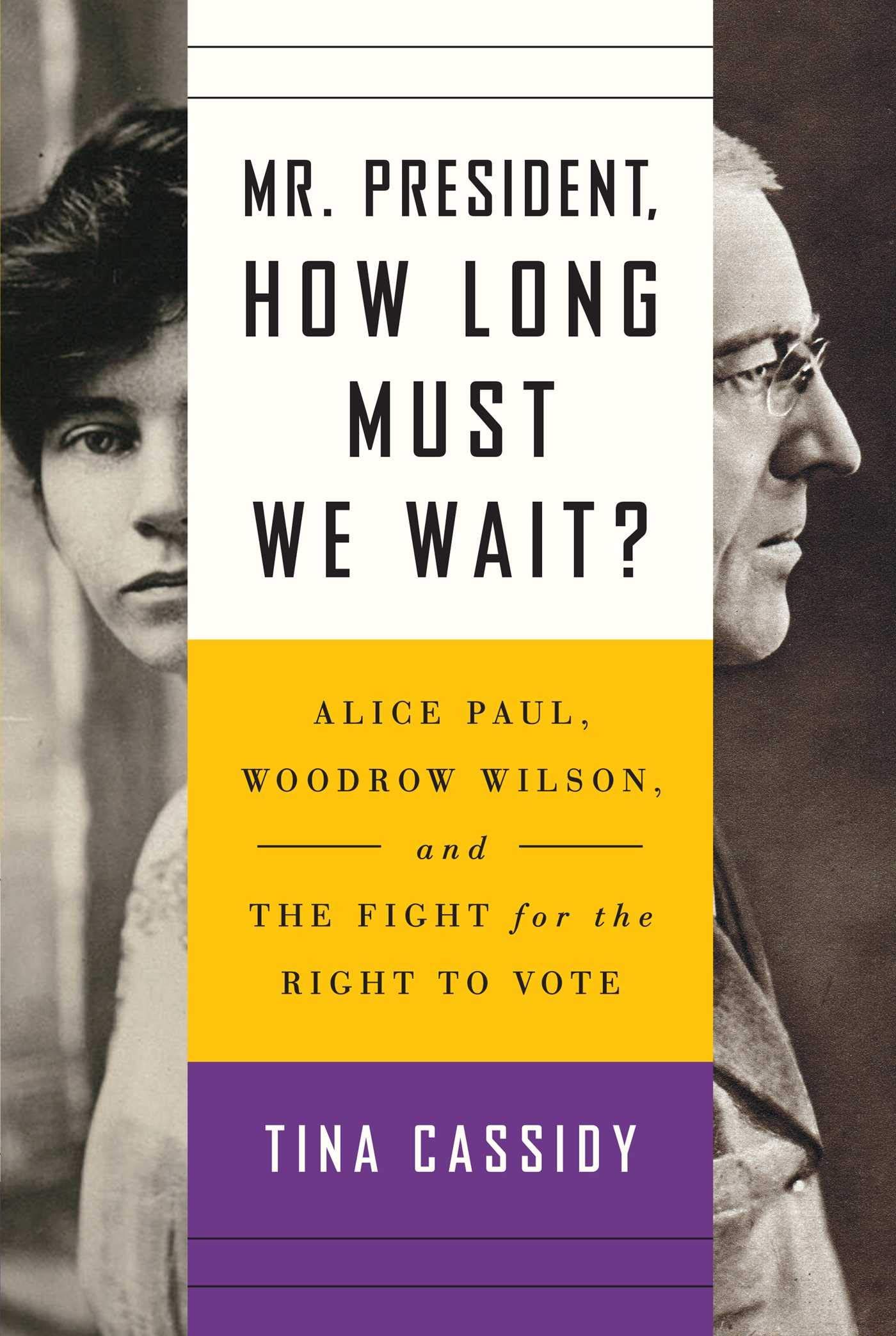
Mr. President, How Long Must We Wait?: Alice Paul, Woodrow Wilson, and the Fight for the Right to Vote by Tina Cassidy
This dual biography of Alice Paul and Woodrow Wilson manages to be both well-researched and narratively compelling. When most suffragists practiced polite activism, Alice Paul took up a militant approach to her protests. She learned this approach in England, and after England’s women won the right to vote, she came back home to the United States to practice what she’d learned. She became a thorn in Woodrow Wilson’s side as she picketed the White House and demanded face to face meetings with him. Her activism kept the movement in the press and eventually helped lead to the passing of the 19th amendment.
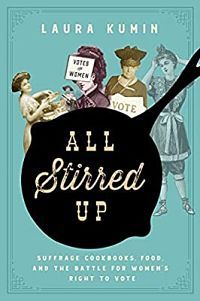
All Stirred Up: Suffrage Cookbooks, Food, and the Battle for Women’s Right to Vote by Laura Kumin (August 4)
I love the premise behind this book. Kumin looks into how suffragists politicized cooking, food culture, and social gatherings to further women’s suffrage. She includes historic recipes and images to show women’s ingenuity in demanding equal rights. Though I’m not much of a cook, I’m still looking forward to trying some of the recipes!
Adult Fiction
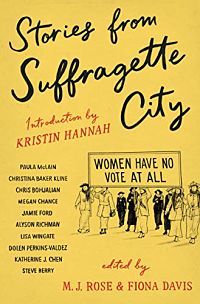
Stories From Suffragette City edited by M.J. Rose and Fiona Davis (October 27)
On October 23, 1915, 25,000 women marched up Fifth Avenue demanding the right to vote in New York City in the largest suffrage parade so far. The short stories in this collection all take place on that day and show the personalities and reasons behind why some women joined the movement. The 13 authors in this collection include Dolen Perkins-Valdez, Chris Bohjalian, Kristin Hannah, and more.
The Once and Future Witches by Alix E. Harrow (October 13)
Three sister witches team up to change the course of witchcraft and feminism in this historical fantasy set amidst the Women’s Suffrage Movement. Any woman can be a witch, but most magic has been banished and women are punished for using their powers. In step Juniper, Bea, and Agnes, three sisters who, in their refusal to withstand any more misogyny, fight for women’s rights using spells taken from fairytales and nursery rhymes. This is one of my favorite books of this year.
Let Us Dream by Alyssa Cole
Bertha Hines is a cabaret owner and suffragist in 1917 Harlem. She doesn’t have time for nor does she want any romance in her life, but when she hires Bengali Muslim Amir Chowdhury as a chef, sparks fly in more ways than one. Alyssa Cole is the queen of romance and this one will not disappoint. This is a great place to start if you haven’t read her before, particularly if you’re a romance reader who enjoys social justice themes and a well-researched setting.
YA and Middle-Grade Nonfiction
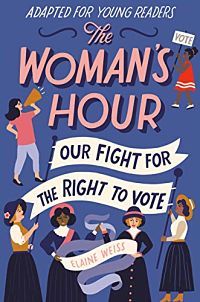
The Woman’s Hour (Adapted for Young Readers) by Elaine Weiss
This adaptation of Weiss’s book for adults maintains the suspense and historical details of the original (though pared down) and includes illustrations and areas dedicated to defining key terms. This is a great starting point on the Women’s Suffrage Movement for middle graders, but teens and adults would enjoy it, too.
Votes for Women!: American Suffragists and the Battle for the Ballot by Winifred Conkling
This is an excellent starting point on women’s suffrage for teens or adults intimidated by 500+ pages of history. Conkling gives a thorough overview of the movement without the text becoming overwhelming. She also specifically addresses the movement’s relationship with the abolitionist movement and the racist attitudes that pervaded it. With lots of photographs, this history book is accessible and doesn’t hold back in its analysis of the more problematic issues of the movement.
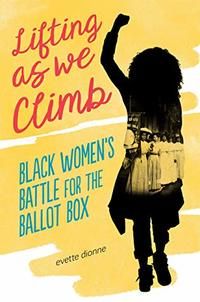
Lifting as We Climb: Black Women’s Battle for the Ballot Box by Evette Dionne
While there are several adult books that focus on the African American woman’s role in the suffrage movement, this is the only book I know of that does so for young adults. In addition to giving a detailed history, Dionne includes biographical profiles of African Americans who were involved in the movement, like Ida B. Wells, Fannie Hamer, and Frederick Douglas. While most overviews of the Women’s Suffrage Movement revolve around three women—Susan B. Anthony, Elizabeth Cady Stanton, and Alice Paul—Dionne shows that the movement was far less white than it’s usually presented. Written for a middle grade audience, teens and adults will find it just as fascinating and infuriating.
Children’s Books
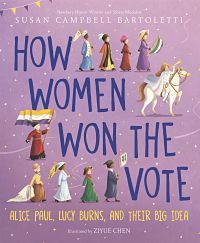
How Women Won the Vote: Alice Paul, Lucy Burns, and Their Big Idea by Susan Campbell Bartoletti, Illustrated by Ziyue Chen
Full of gorgeous illustrations, photographs, timelines, and voting memorabilia, this immersive read is great for older elementary to middle-grade readers. Bartoletti centers the narrative around the Women’s March of 1913 in Washington, D.C., and the two women who organized it, Alice Paul and Lucy Burns. These women and this march were integral to the eventual passing of the 19th amendment, and this text is a fun and fascinating way to introduce young readers to the movement.
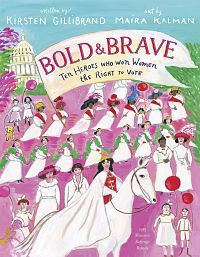
Bold & Brave: Ten Heroes Who Won Women the Right to Vote by Kirsten Gillibrand, Illustrated by Maira Kalman
In Bold & Brave, Senator Kirsten Gillibrand gives snapshot bios of ten fascinating women from the movement, from well-known figures like Susan B. Anthony and Sojourner Truth to lesser-known but equally important women like Inez Milholland and Jovita Idár. Senator Gillibrand doesn’t shy away from addressing the racism in the movement, either. Paired with stunning illustrations from Maira Kalman, this is the most beautiful book on this list. I ostensibly bought it for my daughter, but I enjoy flipping through its pages as much if not more than she does.

Friends for Freedom by Suzanne Slade, Illustrated by Nicole Tadgell
Susan B. Anthony and Frederick Douglas formed a long-lasting friendship in their campaigning against slavery and for the rights of African Americans and women. This picture book chronicles their friendship through public ridicule, successes, failures, and disagreements, accompanied by soft and lovely watercolor illustrations by Nicole Tadgell. At the end of the book, both the author and illustrator explain the research that went into creating it.
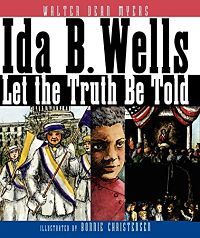
Ida B. Wells: Let the Truth Be Told by Walter Dean Myers, Illustrated by Bonnie Christensen
This picture book biography follows the life of activist and suffragist Ida B. Wells from her birth as a slave to her anti-lynching and women’s suffrage activism. Interspersed throughout the text are actual quotes from Wells. This picture book does not hold back on the horror of lynching; it recreates a full-page spread of a famous lynching photograph depicting a noose being hung from a tree. It’s a great introduction to Ida B. Wells and to the major social issues of her lifetime.
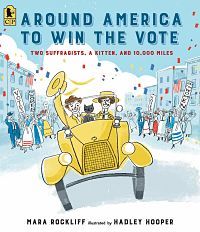
Around America to Win the Vote by Mara Rockliff, Illustrated by Hadley Hooper
This picture book is a winner with my kid and her favorite on this list. It’s about two suffragists, Nell Richardson and Alice Burke, traveling a black kitten in a bright yellow car across the United States to convince people that women deserve the vote. They drove through blizzards and got stuck in the mud many times, but their perseverance kept them going. Without women like them, the message of women’s suffrage wouldn’t have reached rural areas. The illustrations are vibrant and yellow-themed, and with a kitten on every page, it’s gold for younger children.
For more books about women’s suffrage, check out my post on women’s literary activism during the movement, and these recommendations about the British suffragettes.
Source : 20 Must-Read Books About The U.S. Women’s Suffrage Movement
